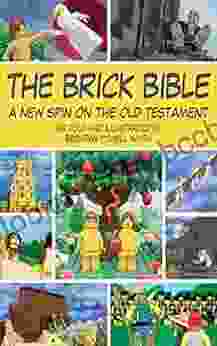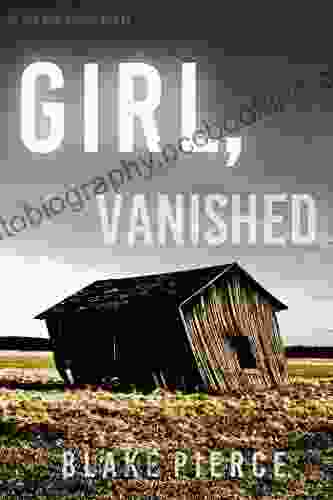Unveiling the Secrets of Ancient Cloth Production: A Glimpse into the Aegean and Anatolian Textile Traditions

Ancient textiles offer a captivating window into the cultural and technological advancements of civilizations past. In the Aegean and Anatolia regions, cloth production played a pivotal role in daily life, influencing fashion, trade, and even art. This article delves into the fascinating world of ancient cloth production, exploring the techniques, materials, and societal significance of textiles in these ancient lands.
Techniques and Materials
The ancient weavers of the Aegean and Anatolia employed various weaving techniques, including plain weave, twill, and tapestry. Plain weave, characterized by its regular interlacing of warp and weft threads, was the most commonly used technique. Twill, a more elaborate weave, creates diagonal patterns on the fabric surface, while tapestry weaves involve the interlacing of colored weft threads to form intricate designs.
4.5 out of 5
| Language | : | English |
| File size | : | 19469 KB |
| Text-to-Speech | : | Enabled |
| Screen Reader | : | Supported |
| Enhanced typesetting | : | Enabled |
| Print length | : | 240 pages |
The choice of materials greatly influenced the appearance and durability of ancient textiles. Wool remained the most widely used fiber, praised for its warmth and comfort. Linen, derived from the flax plant, offered a lightweight and breathable alternative, particularly suitable for garments worn during hot weather. Silk, a luxurious fabric imported from the East, was reserved for special occasions and garments worn by the elite.
Dyes and Patterns
The vibrant colors of ancient textiles were achieved through a variety of natural dyes. Madder produced hues ranging from soft pinks to deep reds, while indigo provided a rich blue color. Saffron, derived from the crocus flower, yielded a golden yellow, and weld, extracted from the roots of the dyer's weed plant, created shades of green. Complex patterns were often woven into the fabric using different colored threads or by manipulating the weave structure.
Fashion and Adornment
Textiles played a crucial role in fashioning garments and accessories in ancient Aegean and Anatolian societies. Tunics, robes, and cloaks were among the most common articles of clothing, adorned with intricate bFree Downloads, fringes, and embroideries. Headdresses and veils, made from delicate sheer fabrics, complemented the overall attire.
Jewelry, such as necklaces, bracelets, and earrings, often incorporated woven elements. Gold and silver threads were interwoven with beads and gemstones to create stunning pieces that showcased the skill of ancient artisans.
Trade and Exchange
Cloth production and trade were integral to the economic and cultural interactions between the Aegean and Anatolia regions. Textiles were exchanged for other goods, such as foodstuffs, raw materials, and even slaves. The circulation of textiles facilitated the spread of new weaving techniques, dyes, and design motifs across different cultures.
Art and Representation
Textiles not only served practical purposes but also found their way into the realm of art. In ancient Aegean and Anatolian pottery, wall paintings, and sculptures, textiles are often depicted, providing valuable insights into the fabrics, garments, and adornments worn by people in different periods.
Ancient cloth production in the Aegean and Anatolia regions represents a rich legacy of cultural expression, technological innovation, and economic exchange. The meticulous techniques, diverse materials, vibrant dyes, and intricate patterns employed by ancient weavers showcase the artistry and ingenuity of these ancient civilizations. Through the study of ancient textiles, we gain a deeper understanding of the daily lives, social customs, and artistic traditions of our ancestors.
4.5 out of 5
| Language | : | English |
| File size | : | 19469 KB |
| Text-to-Speech | : | Enabled |
| Screen Reader | : | Supported |
| Enhanced typesetting | : | Enabled |
| Print length | : | 240 pages |
Do you want to contribute by writing guest posts on this blog?
Please contact us and send us a resume of previous articles that you have written.
 Book
Book Novel
Novel Page
Page Chapter
Chapter Text
Text Story
Story Genre
Genre Reader
Reader Library
Library Paperback
Paperback E-book
E-book Magazine
Magazine Newspaper
Newspaper Paragraph
Paragraph Sentence
Sentence Bookmark
Bookmark Shelf
Shelf Glossary
Glossary Bibliography
Bibliography Foreword
Foreword Preface
Preface Synopsis
Synopsis Annotation
Annotation Footnote
Footnote Manuscript
Manuscript Scroll
Scroll Codex
Codex Tome
Tome Bestseller
Bestseller Classics
Classics Library card
Library card Narrative
Narrative Biography
Biography Autobiography
Autobiography Memoir
Memoir Reference
Reference Encyclopedia
Encyclopedia Blake Banner
Blake Banner Benton Rain Patterson
Benton Rain Patterson Billy Connolly
Billy Connolly Benito Mussolini
Benito Mussolini Baruch Inbar
Baruch Inbar Brad Gooch
Brad Gooch Brendan Mcdonough
Brendan Mcdonough Bill Loguidice
Bill Loguidice Bil Johnson
Bil Johnson Bill James
Bill James Brenda Gable
Brenda Gable Bob Tewksbury
Bob Tewksbury Betty Riegel
Betty Riegel Blake Sebring
Blake Sebring Brad Walker
Brad Walker Benjamin R Jordan
Benjamin R Jordan Bill Walker
Bill Walker Benedict Jacka
Benedict Jacka Bboong Bbang Kkyu
Bboong Bbang Kkyu Bob Crosetto
Bob Crosetto
Light bulbAdvertise smarter! Our strategic ad space ensures maximum exposure. Reserve your spot today!

 Clarence BrooksIndulge Your Taste Buds: 100 Easy Camping Recipes to Elevate Your Outdoor...
Clarence BrooksIndulge Your Taste Buds: 100 Easy Camping Recipes to Elevate Your Outdoor... Marc FosterFollow ·18.7k
Marc FosterFollow ·18.7k Louis HayesFollow ·5.3k
Louis HayesFollow ·5.3k Mark TwainFollow ·10.6k
Mark TwainFollow ·10.6k William WordsworthFollow ·4.7k
William WordsworthFollow ·4.7k Andy HayesFollow ·9k
Andy HayesFollow ·9k Cooper BellFollow ·12.4k
Cooper BellFollow ·12.4k George R.R. MartinFollow ·19.1k
George R.R. MartinFollow ·19.1k William GoldingFollow ·5.1k
William GoldingFollow ·5.1k

 Alex Foster
Alex FosterRediscover the Old Testament with a Captivating Graphic...
Prepare to embark on an extraordinary...

 Ross Nelson
Ross NelsonThe Christmas Story: The Brick Bible for Kids
LEGO® Bricks Meet the...

 Anton Chekhov
Anton ChekhovUnveiling the Hidden History: The Brick Chronicle of...
In the annals of American history, the...

 Blake Bell
Blake BellOptions Trading Crash Course: A Comprehensive Guide to...
In the fast-paced and...

 Percy Bysshe Shelley
Percy Bysshe ShelleyUnlock Your Artistic Potential with "The Practical...
The Indispensable Handbook for...
4.5 out of 5
| Language | : | English |
| File size | : | 19469 KB |
| Text-to-Speech | : | Enabled |
| Screen Reader | : | Supported |
| Enhanced typesetting | : | Enabled |
| Print length | : | 240 pages |











